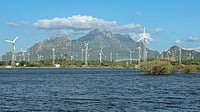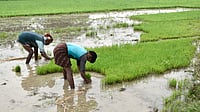Delhi-NCR experienced light to moderate rainfall accompanied by thunderstorms and gusty winds on the morning of June 30. According to the India Meteorological Department (IMD), the rainfall on June 29 commenced the monsoon season, two days after the usual date of June 27 and advanced over the remaining parts of the country nine days before the usual date of July 8, reported The Hindu.
According to IMD data, this is the earliest the monsoon has covered the entire country since 2020, when it did so by June 26.
"The Southwest Monsoon has further advanced into remaining parts of Rajasthan, West Uttar Pradesh and Haryana and entire Delhi today, the June 29 2025," the IMD said in a statement on X.
The weather department predicted that heavy to very heavy rain is likely to continue in many parts of northwest, central, east and northeast India over the next seven days. It added that extremely heavy rain may occur in some areas of Jharkhand on June 29 and 30 and in Odisha on June 29.
The monsoon usually makes its onset over Kerala by June 1 and covers the entire country by July 8. It starts retreating from northwest India around September 17 and withdraws completely by October 15. However, this year, the monsoon reached Kerala on May 24, its earliest onset over the Indian mainland since 2009, when it arrived on May 23.
According to the IMD, the monsoon reached Delhi on June 28 last year, June 25 in 2023, June 30 in 2022, July 13 in 2021 and June 25 in 2020. The system covered the entire country by July 2 in 2024, 2023 and 2022; July 13 in 2021 and June 26 in 2020.
In May, the IMD had forecast that India is likely to receive above normal rainfall over Central India and South Peninsular India with 106% of the long-period average rainfall of 87 cm during the June-September monsoon season. Rainfall between 96 and 104% of this 50-year average is considered 'normal'.
Rainfall Crucial for Agriculture
With above-normal monsoon this year, agricultural output could get a positive boost by replenishing aquifers and supporting farming activity. Besides, seasonal monsoon rains also replenish reservoirs used to irrigate mainly winter-sown crops. This is particularly going to help farmers who have been grappling with early onset of summer.
Madhavi Arora, Economist at Emkay Global Financial Services Ltd told Bloomberg that ample rainfall this year “should help ease food price volatility and reduce inflation”



























